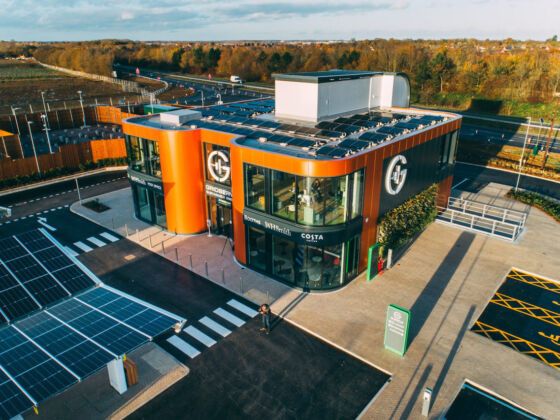This is The Climate Win, the most positive sustainability news around the world every week.
It’s been dubbed the Electric Forecourt by its maker, GRIDSERVE. What it resembles most is the convenience stores and gas stations we’re accustomed to visiting around the world, save for one thing — there are no gas pumps. On December 5, the first location of more than 100 in planning around the UK opened to customers in Braintree, Essex.
